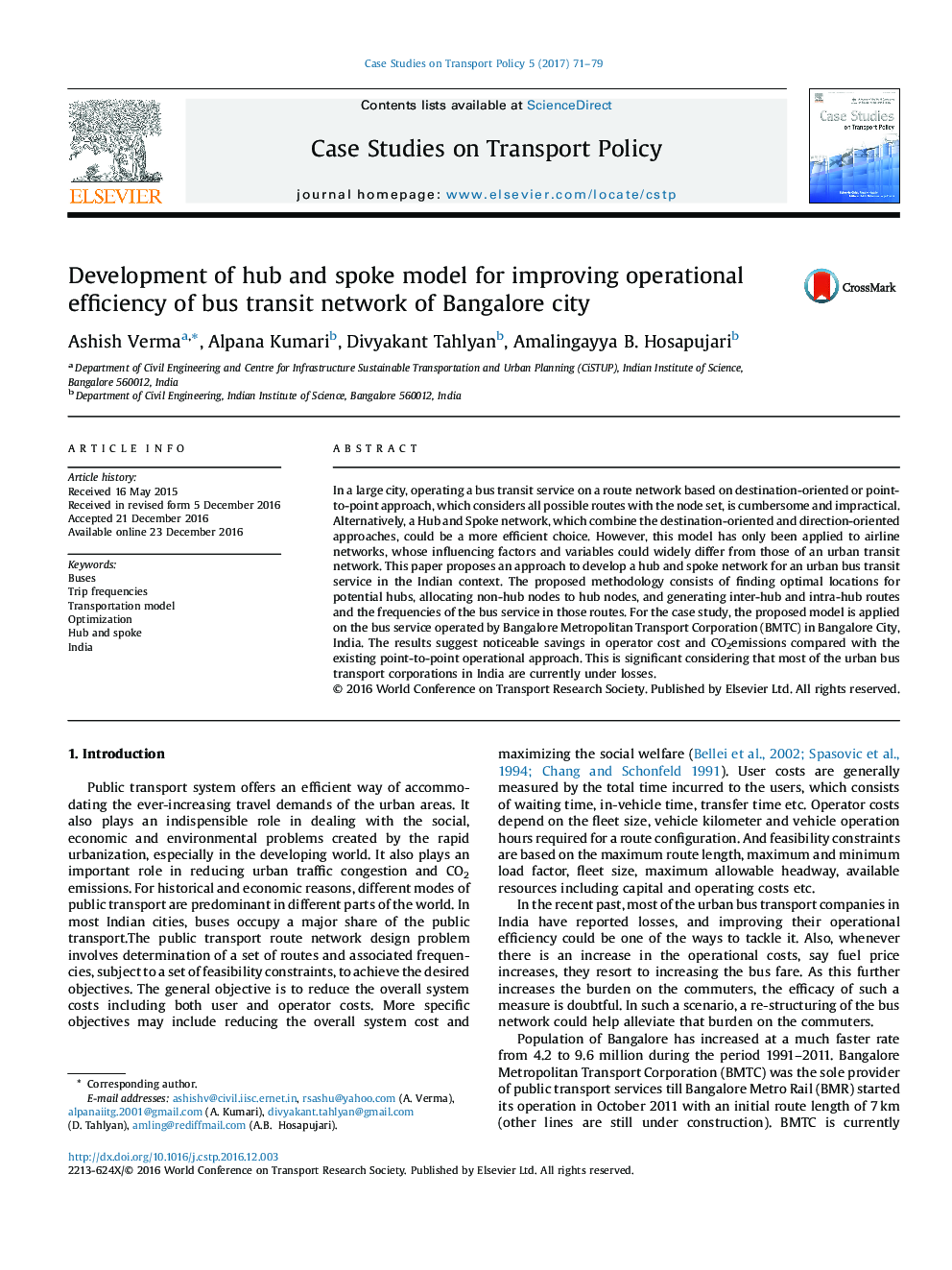| Article ID | Journal | Published Year | Pages | File Type |
|---|---|---|---|---|
| 6479323 | Case Studies on Transport Policy | 2017 | 9 Pages |
â¢Development of Hub and Spoke Model to improve operational efficiency of Buses.â¢Improved operational efficiency of BMTC buses with respect to existing point to pint network.â¢Reduction of fleet size by 19.17% for hub and spoke network.
In a large city, operating a bus transit service on a route network based on destination-oriented or point-to-point approach, which considers all possible routes with the node set, is cumbersome and impractical. Alternatively, a Hub and Spoke network, which combine the destination-oriented and direction-oriented approaches, could be a more efficient choice. However, this model has only been applied to airline networks, whose influencing factors and variables could widely differ from those of an urban transit network. This paper proposes an approach to develop a hub and spoke network for an urban bus transit service in the Indian context. The proposed methodology consists of finding optimal locations for potential hubs, allocating non-hub nodes to hub nodes, and generating inter-hub and intra-hub routes and the frequencies of the bus service in those routes. For the case study, the proposed model is applied on the bus service operated by Bangalore Metropolitan Transport Corporation (BMTC) in Bangalore City, India. The results suggest noticeable savings in operator cost and CO2emissions compared with the existing point-to-point operational approach. This is significant considering that most of the urban bus transport corporations in India are currently under losses.
